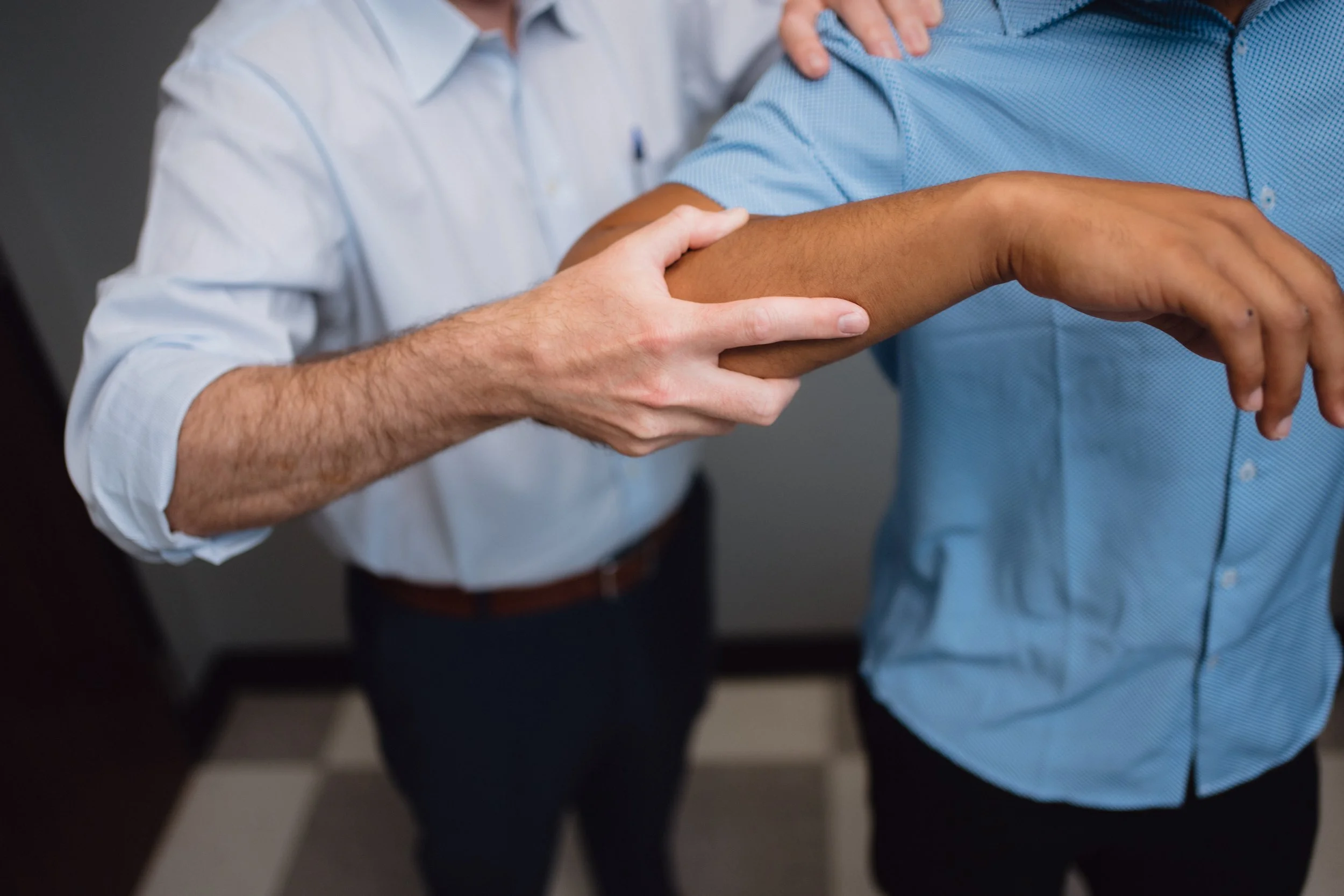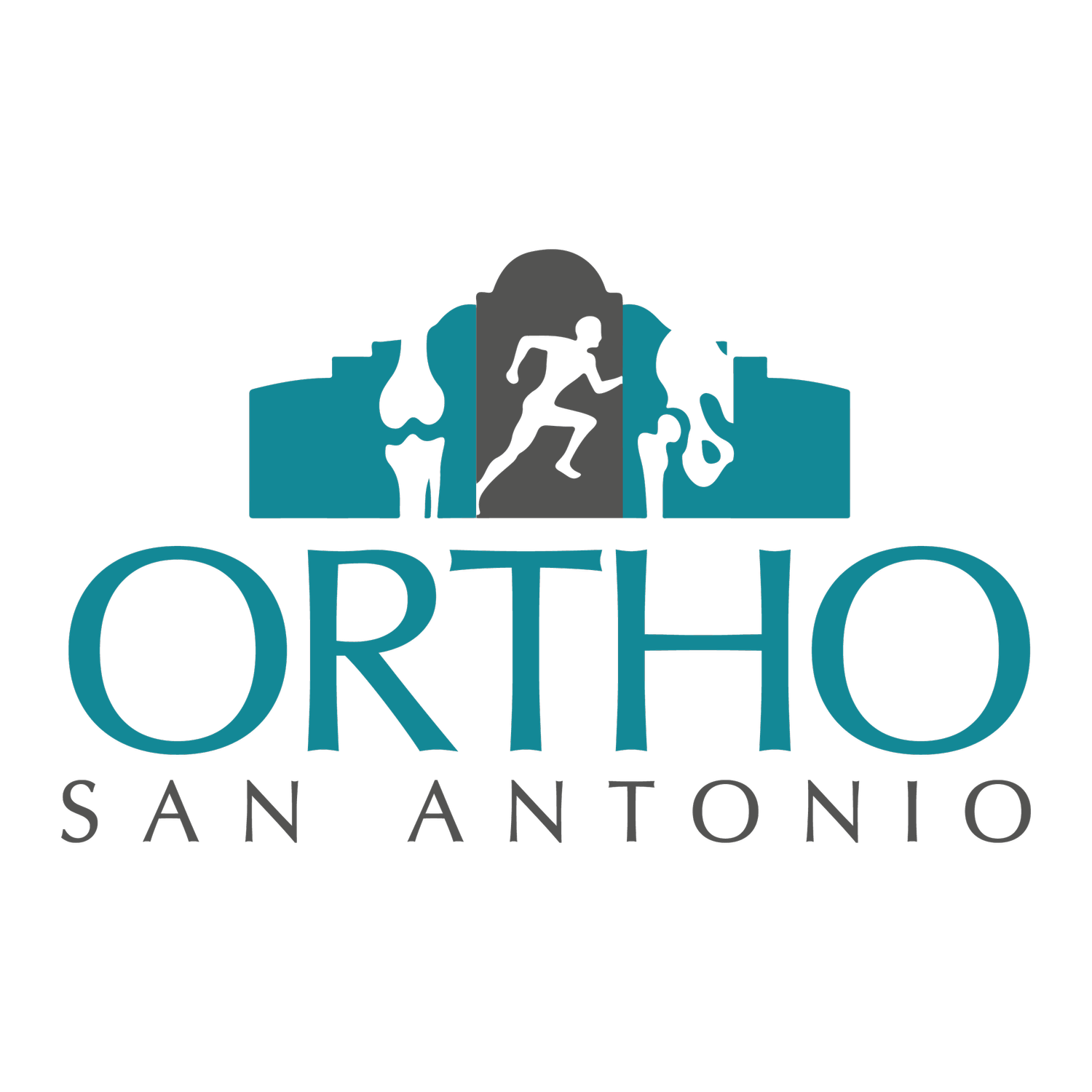
Tennis Elbow Surgery & Treatment in San Antonio
Find relief from elbow pain with advanced care from Ortho San Antonio’s elbow specialists.
what is tennis elbow?
Tennis Elbow, also known as lateral epicondylitis, is a common cause of elbow pain. It occurs when repetitive motions, such as gripping, lifting, or twisting, cause irritation or inflammation of the tendons attached to the forearm muscles. Despite its name, you don’t have to play tennis to develop this condition. It is often experienced by people who use their hands and wrists frequently, including those who work at a computer, lift objects, or perform manual labor. Eventually, this overuse can tear the tendon, causing pain, tenderness, and weakness in the arm. You may be able to avoid surgery if you receive early treatment to prevent the condition from worsening.
Causes of Tennis Elbow
Tennis elbow occurs when repetitive motion and overuse strain the tendons connecting your forearm muscles to the outside of your elbow (lateral epicondyle). Repeated stress can cause tiny tears in the tendon, resulting in inflammation, pain, and weakness over time.
While athletes can develop tennis elbow from racquet sports, it’s just as common in people whose jobs or hobbies involve repetitive arm movements, such as:
Gripping or lifting heavy objects
Using hand tools or gardening equipment
Typing or working at a computer for long hours
Painting, carpentry, or mechanical work
Even everyday activities can contribute to tennis elbow if performed repetitively without adequate rest or proper technique.
Signs and Symptoms of Tennis Elbow
Symptoms of tennis elbow usually develop gradually and begin as mild discomfort before progressing to more constant pain. In most cases, the pain becomes worse with activity or with gripping, lifting, or twisting. Common symptoms include:
Pain or tenderness on the outer side of the elbow
Weak grip strength, especially when shaking hands or holding objects
Discomfort that worsens with wrist or forearm movement
Stiffness in the elbow, particularly in the morning
Pain that radiates down the forearm toward the wrist
If your symptoms persist for more than a few weeks or begin to affect your daily activities, you may need to see an orthopedic elbow specialist.
When to See a Specialist
A mild case of tennis elbow can sometimes be improved by resting, applying ice, and changing activities. However, if your elbow pain lasts longer than six weeks, or if it begins to limit your daily activities like gripping, lifting, or typing, it’s time to see an orthopedic elbow specialist.
Evaluation at an early stage is crucial. An accurate diagnosis can help you heal faster and prevent chronic pain and long-term damage to your tendons.
Providing non-surgical and minimally invasive surgical options to relieve pain and restore function, Ortho San Antonio's board-certified surgeons specialize in elbow injuries and tendon conditions.
Tennis Elbow Treatment Option
Non-Surgical Treatments for Tennis Elbow
In most cases, tennis elbow can be treated without surgery. Ortho San Antonio begins with conservative, non-surgical treatments to reduce pain, promote healing, and restore arm strength. Common treatment options include:
Rest & Activity Modification - To allow the tendon to heal, avoid repetitive motions and heavy lifting.
Bracing or Splinting - Apply an elbow strap or wrist brace to relieve tendon strain.
Therapeutic Exercises - Stretching and strengthening exercises to improve flexibility and tendon endurance.
Anti-Inflammatory Medication or Topical Treatments - Used to reduce swelling and pain.
Injections - Corticosteroid or platelet-rich plasma (PRP) injections may decrease inflammation and stimulate natural healing.
Surgical Options for Tennis Elbow
If symptoms persist after 6 to 12 months of non-surgical treatment, your doctor may recommend surgery to repair the damaged tendon. Tennis elbow surgery may include:
Removal of damaged tendon tissue to relieve pain and promote healing
Reattachment of healthy tendon fibers to the bone for restored strength and stability
Debridement and tendon repair performed through a small incision or a minimally invasive approach
Post-surgical rehabilitation with guided therapy to rebuild motion and function
Do I have Tennis ELbow or GOlfer’s Elbow?
Are you unsure if your elbow pain is caused by tennis elbow or golfer's elbow? To help you understand what's causing your discomfort, our Elbow Specialist, Dr. Hinchey, explains the key differences in this short video.

Living with elbow pain can make even simple tasks difficult. Let’s Find a solution to your pain.
At Ortho San Antonio, our team of board-certified surgeons identifies the source of your elbow pain and provides the most effective treatment options to help you heal and regain full function.
Our Locations
-

Alamo Heights
Address: 423 Treeline Park, Suite 350, San Antonio, TX 78209
-

Westover Hills
Address: 11212 State Highway 151, Medical Plaza 1, 2nd Floor, Suite 200, San Antonio, TX 78251
-

Medical Center
ADDRESS: 2833 Babcock Rd, Tower 2, Suite 435, San Antonio, TX 78229
-

Boerne
ADDRESS: 138 Old San Antonio Rd, Suite 302, Boerne, TX 78006
-

Castroville
Address: 346 County Road 4712, Castroville, TX 78009
-

Piedras
ADDRESS: 4100 E. Piedras, Suite 165, San Antonio, TX 78228
-

Schertz
Address: 6051 FM 3009, Suite 260, Schertz, TX 78154


